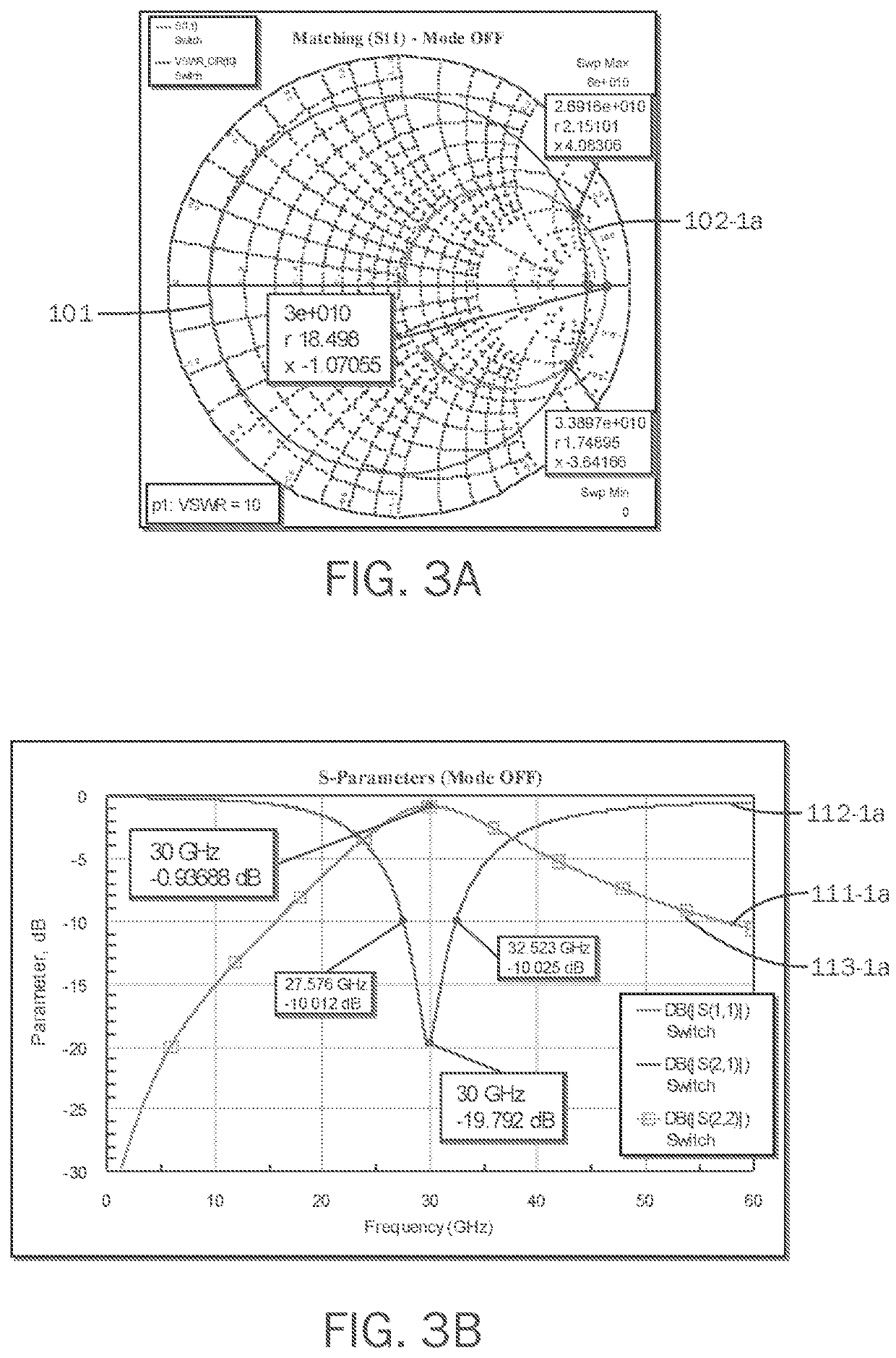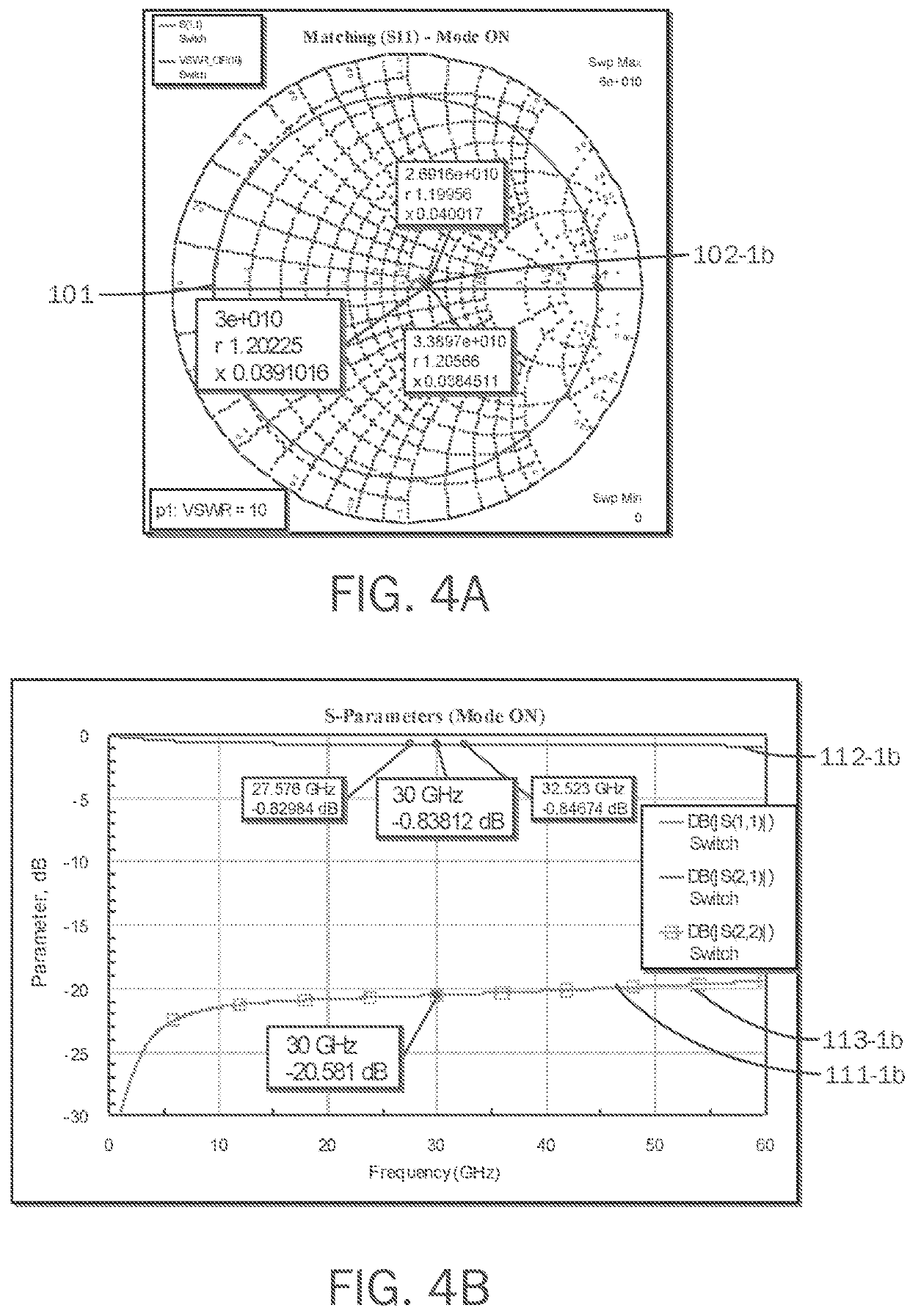Low-loss mm-wave CMOS resonant switch
a resonant switch, low-loss technology, applied in electronic switching, pulse technique, electrical equipment, etc., can solve the problems of inability to penetrate solid obstacles, limited transmission distance of such signals, and inability to integrate on-die components
- Summary
- Abstract
- Description
- Claims
- Application Information
AI Technical Summary
Benefits of technology
Problems solved by technology
Method used
Image
Examples
first embodiment
[0063]Referring now to the schematic diagram of FIG. 1, a resonant switch 10a is generally defined by a first port 12a and a second port 12b, to which various other circuit components may be connected. In general, the resonant switch 10 selectively connects those components that are directly connected to the first port 12a, to those components that are directly connected to the second port 12b.
[0064]Various embodiments of the resonant switch 10 incorporate a triple inductor network 14, which may be comprised of a center inductor L2, a first peripheral inductor L1, and a second peripheral inductor L3. The center inductor L2 is defined by a first terminal 16a-2 that is electrically connected to the first port 12a, and a second terminal 16b-2 that is electrically connected to the second port 12b. The first peripheral inductor L1 likewise has a first terminal 16a-1 and a second terminal 16b-1, while the second peripheral inductor L2 has a first terminal 16a-3 and a second terminal 16b-...
second embodiment
[0090]The peripheral inductors L1, L3 are a part of the one transistor switch 18 that is a constituent element of the resonant switch 10. In the illustrated embodiment, the transistor switch 18 has a single transistor 20. In the illustrated second embodiment of the resonant switch 10b, the transistor 20 is contemplated to be a field effect transistor that has a gate terminal, a drain terminal, and a source terminal. More specifically, such a field effect transistor is understood to be a MOSFET transistor. In the illustrated example, the transistor 20 is of the N-type, that is, having an n-type drain and source, and a p-type substrate. This is by way of example only and not of limitation, and P-type transistors may be substituted if desired. Moreover, the specific fabrication technology need not be limited to metal oxide semiconductor, and any other suitable transistor type may be substituted in the transistor switch 18.
[0091]In the transistor switch 18, the drain terminal of the tra...
third embodiment
[0115]The peripheral inductors a part of transistor switches 18 that are a constituent element of the resonant switch 10. There is a first transistor switch 18a that incorporates the first peripheral inductor L1, and a second transistor switch 18b that incorporates the second peripheral inductor L3. In one embodiment, the first transistor switch 18a has first transistor 20a-1 and a second transistor 20a-2 that are connected in series, and the second transistor switch 18b has a first transistor 20b-1 and a second transistor 20b-2 that are similarly connected in series. In the illustrated third embodiment of the resonant switch 10c, the transistors 20 are contemplated to be field effect transistors that have a gate terminal, a drain terminal, and a source terminal. The specific fabrication technology need not be limited to metal oxide semiconductor as shown, and any other suitable transistor type may be substituted in the transistor switches 18.
[0116]In the first transistor switch 18a...
PUM
 Login to View More
Login to View More Abstract
Description
Claims
Application Information
 Login to View More
Login to View More - R&D
- Intellectual Property
- Life Sciences
- Materials
- Tech Scout
- Unparalleled Data Quality
- Higher Quality Content
- 60% Fewer Hallucinations
Browse by: Latest US Patents, China's latest patents, Technical Efficacy Thesaurus, Application Domain, Technology Topic, Popular Technical Reports.
© 2025 PatSnap. All rights reserved.Legal|Privacy policy|Modern Slavery Act Transparency Statement|Sitemap|About US| Contact US: help@patsnap.com



